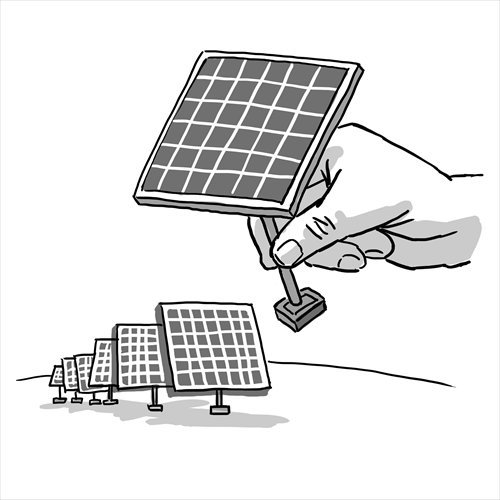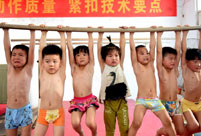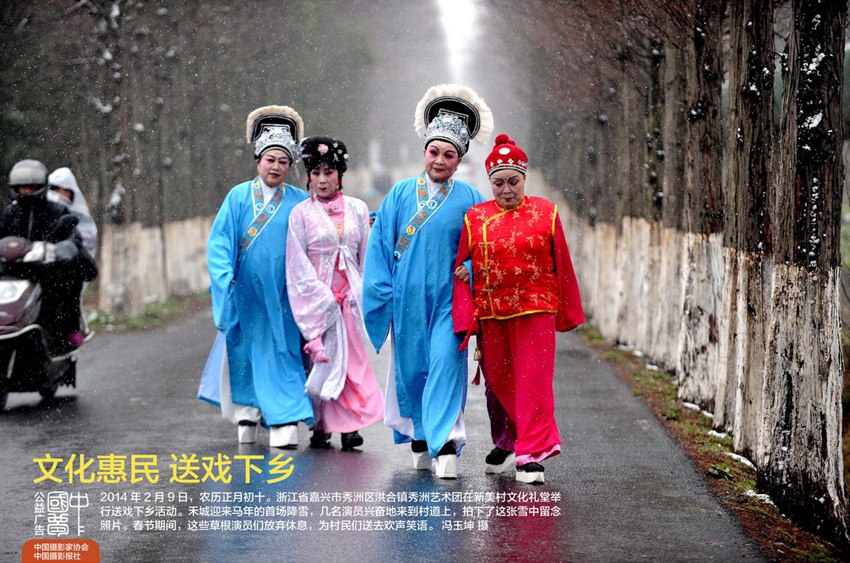 Happy life in Xinjiang
Happy life in Xinjiang
 2014 China Hainan Int'l Automotive Exhibition kicks off
2014 China Hainan Int'l Automotive Exhibition kicks off
 Collection of 'China Dream' public-spirited ads
Collection of 'China Dream' public-spirited ads
 The silent holy stones
The silent holy stones
 University students take care of giant pandas
University students take care of giant pandas
 Leading lady a true legend
Leading lady a true legend
 China Pan-Asia Stone Expo held in Kunming
China Pan-Asia Stone Expo held in Kunming
 Taiwan woman marries into Kazak family, 100 sheep plus a flat as dowry
Taiwan woman marries into Kazak family, 100 sheep plus a flat as dowry
 College girls take graduation photos under water in Chongqing
College girls take graduation photos under water in Chongqing
 Cartoon: Xi and football
Cartoon: Xi and football
 |
| (Illustration: Liu Rui/GT) |
Chinese President Xi Jinping is visiting Latin America, his second trip to this region since he took office last year. China is seen as taking a big leap across the Pacific and heading toward the US "backyard."
In Asia, Washington's marching west across the Pacific has apparently exerted pressure on China. Through intervening in the South China Sea issue and consolidating its military alliance with Japan and the Philippines, the US is aggressively beefing up its dominance in the Asia-Pacific region.
Across the Pacific, the two powers' moves toward each other's neighboring region are obviously different. China is neither seeking dominance nor finger-pointing at Latin America, but is engaging in discussions over cooperation as an equal participant.
There are indeed many problems between China and Latin American countries, most of which are caused by trade imbalance. This is related to differences in their economic structures and their positions in the chain of globalization.
At the moment, China is trying to alleviate this issue through domestic economic restructuring and more vigorous investment in Latin America. The latter does not see China as a threat.
It has been demonstrated in the past decade that no other country save China can serve as a strong driving force for the development of Latin America.
Beside the Arena Pernambuco in Recife, one of the host cities of the 2014 World Cup in Brazil, the 3,650 solar panels produced by Chinese manufacturer Yingli Solar glisten brightly.
This is the first photovoltaic power plant in the state of Pernambuco. It is projected to generate 1.5 gigawatt-hours of electricity annually, equivalent to approximately 6,000 Brazilians' electricity consumption a year. And the plant is able to fulfill 30 percent of this World Cup stadium's power requirement.
When the stadium is closed, the power surplus will be directed into local grid. During the match days, Yingli provided 27 sets of solar panels to power all 12 stadiums.
Xi's visit will undoubtedly result in more similar projects, which is also why Latin America values cooperation with China.
China-Latin America cooperation has become part of the most prominent change in global economy since the beginning of the 21st century: Mutual fueling among developing countries in terms of economic development has replaced complete reliance on Western countries in the past.
Beijing certainly has its calculations of interests in developing its relations with Latin American countries. But it's different from brewing military alliances against a target country.
For instance, China has huge demand in energy and agricultural products, and it hopes to acquire more such materials through developing economic and trade relations with Latin America.
China never uses its strength to impose its requirements on others. Some in the West warn Latin America to watch against the Chinese who will dig away Latin American mineral resources, leaving poverty and pollution behind.
These warnings sound ludicrous to Latin Americans. These Westerners are applying their ancestors' deeds in Latin America's resource-rich lands in the past 500 years to the Chinese.
The Americans adopt a different way to approach Asia. As a traditional hegemon, the US strengthens its presence in Asia because it worries that its dominance might be gradually encroached by a rising China.
What US President Barack Obama brought in his April trip to Asia were neither contracts and orders, nor railway and road projects, but its flag of freedom and democracy and its promise of military protection. Washington promised that it would fulfill obligations of protection stipulated in alliance treaties, including when its allies fall into territorial clashes with China.
International public opinion thus focuses on different points when they look at China's "go east" moves and the US' "go west" strategy.
In terms of China's going east, what people are concerned about is how China is going to come up with good solutions of economic and trade frictions with Latin American countries in the future.
But regarding to the US' going west, people stress more on whether Washington can work with China's neighbors to encircle this rising nation.
This gap is fundamentally caused by different strategic choices picked by China and the US. Such differences also decide whether their moves in each other's neighboring region can be sustained in the future.
 Moms on their kid’s coming out
Moms on their kid’s coming out Chinese fighters through lens
Chinese fighters through lens
 Children attend gymnastics training in summer
Children attend gymnastics training in summer
 Beautiful sceneries along the special travel route in Xinjiang
Beautiful sceneries along the special travel route in Xinjiang
 Beauty SWAT member in Xinjiang sparks online frenzy
Beauty SWAT member in Xinjiang sparks online frenzy
 Germany beat Argentina 1-0 to win World Cup
Germany beat Argentina 1-0 to win World Cup
 National fitness team members integrate traditional and modern beauty
National fitness team members integrate traditional and modern beauty Collection of 'China Dream' public-spirited ads
Collection of 'China Dream' public-spirited ads  How Chinese men kill the time when their wives practice square dancing?
How Chinese men kill the time when their wives practice square dancing? China's largest 3D printer builds 2-meter-long boat
China's largest 3D printer builds 2-meter-long boat
 One-legged women with high heel goes viral on Internet
One-legged women with high heel goes viral on Internet Photos of the Week
(July 6 - July 12)
Photos of the Week
(July 6 - July 12)
 'Super moon' seen in Beijing
'Super moon' seen in Beijing
 Happy life in Xinjiang
Happy life in Xinjiang
 'Finding Nemo' in Seattle Aquarium
'Finding Nemo' in Seattle AquariumDay|Week|Month